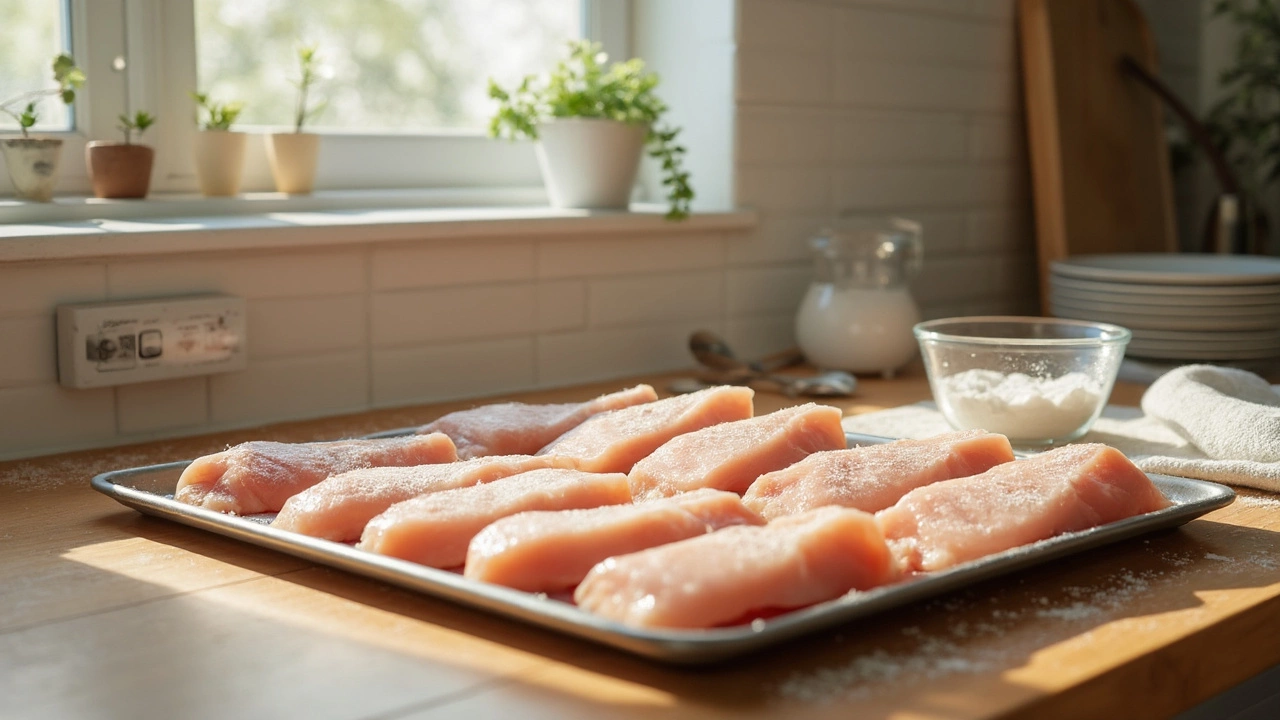Tenderizing Made Easy: Quick Tricks for Juicy, Soft Food
If you’ve ever cut into a tough piece of chicken or a rubbery steak, you know how disappointing it feels. Tenderizing is the secret that turns stubborn cuts into melt‑in‑your‑mouth bites. The good news? You don’t need a professional kitchen—just a few everyday tools and a little know‑how.
Why tenderizing matters
When muscle fibers stay tight, chewing becomes a chore and flavor stays locked inside. Tenderizing breaks down connective tissue, letting juices flow and flavors spread. That’s why restaurant chefs use it for every dish, from juicy chicken breasts to silky pork chops. A little effort upfront means a big payoff on the plate.
Simple ways to tenderize anything
1. Mechanical pounding. A meat mallet or even a rolling pin works wonders. Lightly flatten chicken breast, pork tenderloin, or fish fillet to an even thickness. This shortens cooking time and creates uniform texture.
2. Salt or brine. Sprinkle coarse kosher salt on meat and let it sit for 30 minutes. The salt draws out moisture, then re‑absorbs it with dissolved proteins, making the meat juicier. For larger cuts, dissolve 1 cup salt in 1 quart water and soak for a few hours.
3. Acidic marinades. Lemon juice, vinegar, or yogurt contain acids that soften fibers. Mix your protein with a splash of acid, some oil, and herbs; marinate for 15‑30 minutes for chicken, up to 2 hours for tougher beef.
4. Enzyme boosters. Pineapple, papaya, and kiwi have natural enzymes (bromelain, papain) that break down protein. Blend a few pieces into a quick sauce, coat the meat, and let it sit for 20‑45 minutes. Don’t go longer or the texture turns mushy.
5. Slow, low‑heat cooking. Braising in broth or using a slow cooker lets collagen dissolve slowly, resulting in fork‑tender meat. This method is perfect for stew cuts, ribs, and tough vegetables like carrots.
Combine techniques for best results. For example, salt a chicken breast, pat dry, then give it a quick hammer‑pound before a brief acid marinade. The layers of tenderizing work together, giving you a juicy, flavorful bite every time.
Don’t forget veg. Sliced bell peppers or zucchini benefit from a light toss in oil and a pinch of salt before grilling. The salt pulls out excess water, while the oil protects the surface from drying out, keeping veggies crisp yet tender.
Now you have a toolbox of easy methods that fit any kitchen style. Pick the one that matches your time, ingredients, and equipment, and say goodbye to tough, dry meals. Happy cooking!
How Long Should Baking Soda Sit on Chicken for Best Results?
Wondering how long baking soda should sit on chicken? This article explains why baking soda works for chicken, how much to use, and exactly how long to let it sit. Get practical tips to avoid mushy meat and take your chicken dishes to the next level. Simple kitchen science, zero confusion, and tricks I use at home, all in one place.
